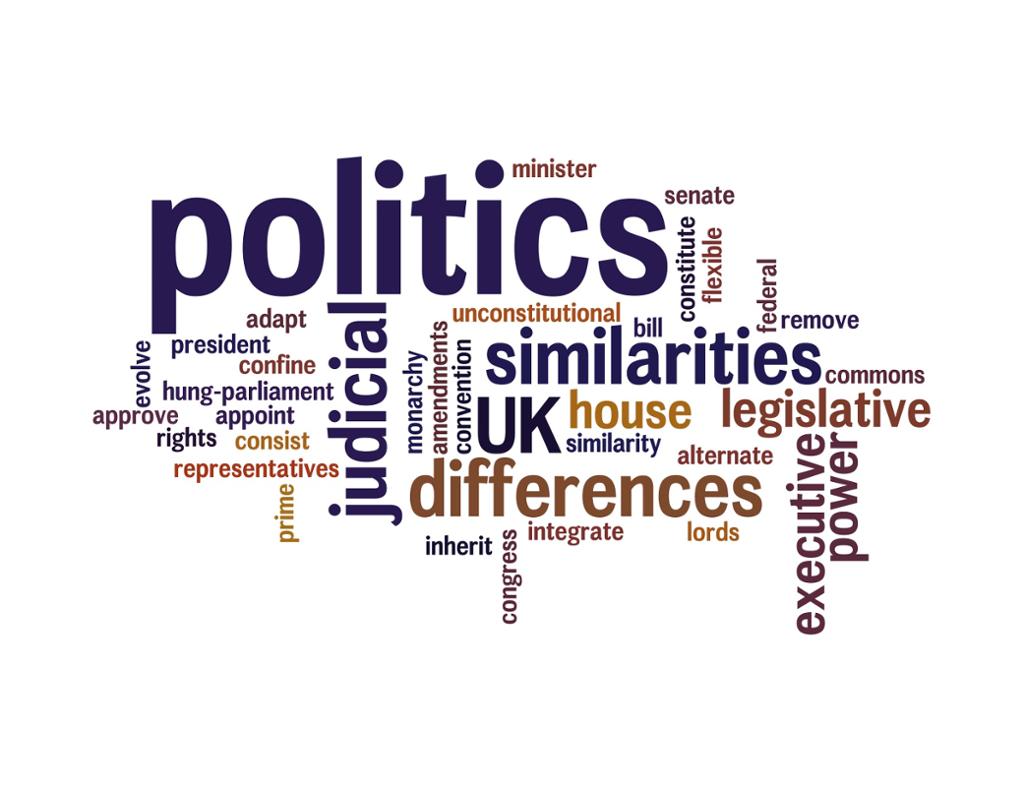
There are both similarities and differences between the American (USA) and British political systems. A major difference is that the American system was designed for "the New World" and the thirteen independent states that appeared after the American Revolution in 1776 while the British system had evolved over centuries, earning the nickname – “The Mother of Parliaments”.
Vocabulary
adapt, evolve, alternate, amendments, confine, consist, judicial, executive, legislative, constitute, convention, emerge, flexible, indicate, integrate, prior, remove, similarity, unconstitutional, appoint, approve, inherit.
Monarchy vs. Federalism

As Britain was, and still is, a constitutional monarchy, America made a system that based itself on federalism, equally distributing power between the original 13 states. A written constitution formed the glue between the three branches of power – the legislative, the judicial and the executive (see below). In Britain, there is in fact no written constitution, even though there is a constitution, consisting of several sources and not only one like in the USA. The American Constitution is flexible as it has Amendments added to it, making it possible to change as time goes by. The first ten Amendments constitute what is called the Bill of Rights, and the American Constitution is one of the oldest written constitutions still in use. In Britain, one of the strongest components in the constitution is convention, defining British law now as they have done before. (Convention is what we in Norway refer to as "sedvane")
The 3 branches of power
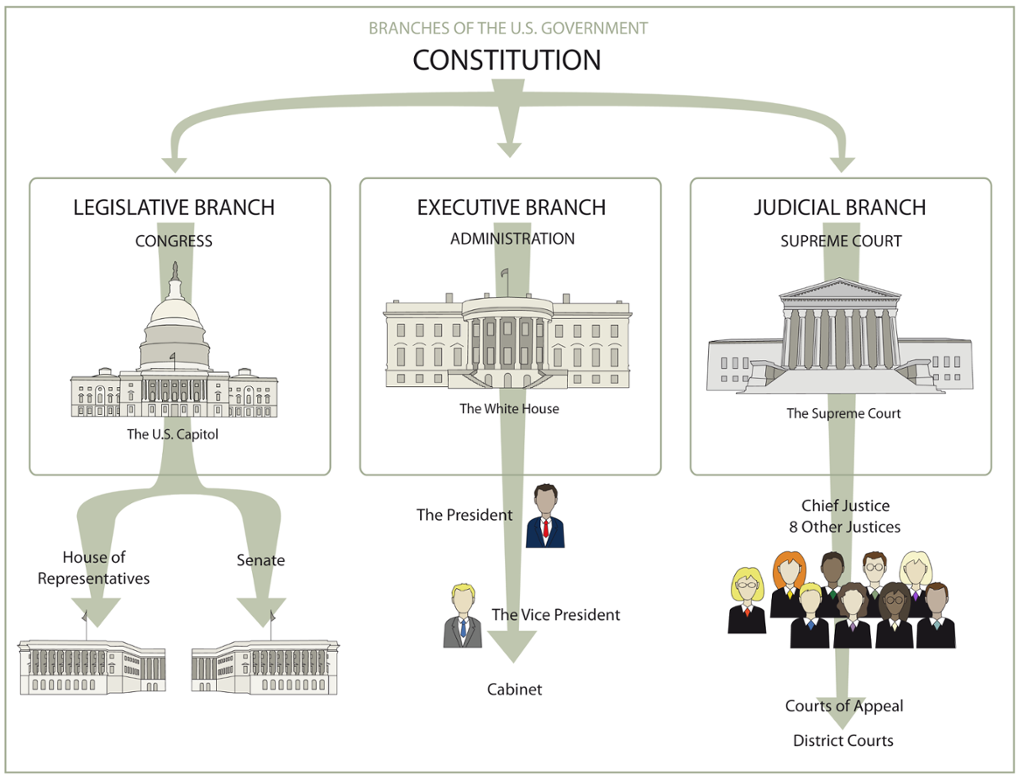
Two Dominant Political Parties
Two political parties dominate in government on both sides of the Atlantic, but especially in America. The American president comes from the Democratic or the Republican Party, while in Britain, which has a multi-party system, the Labour Party and the Conservative Party are the only parties which have formed the government for the last 90 years. However, the 2010 Election produced what is called a hung Parliament where no single party was in majority, and the largest party, the Conservatives, had to form a coalition alliance with the third largest party, the Liberal Democrats.
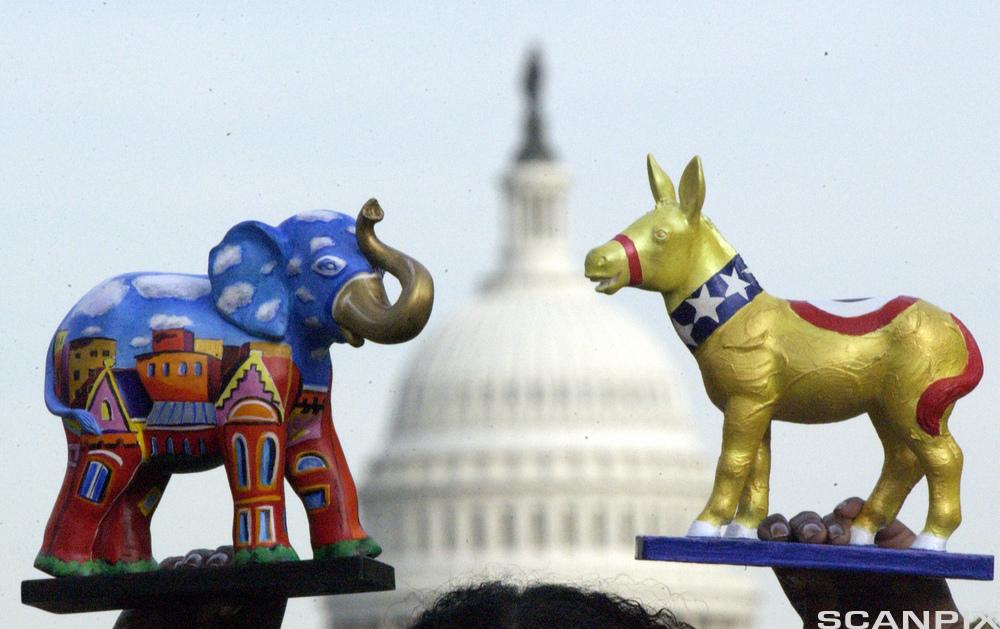
There is another similarity with regard to the legislative branch of government, i.e. Congress in America and Parliament in Britain. They are both bi-cameral (meaning that they have two chambers), consisting of the House of Representatives and the Senate in the USA and the House of Commons and the House of Lords in Britain. While both chambers are elected in America, it is only the House of Commons that is elected in Britain. Members of the House of Lords (called peers) are appointed to serve for their lifetime, because they possess certain personal qualities that are useful in the work going on in the Lords. Until quite recently (1998), sons of peers could inherit their father’s seat in Parliament without any election process or any other evaluation of suitability.
Separation of Powers
Due to their past experience from "the Old World" with greedy and abusive kings and nobility, the Founding Fathers made sure that the American Constitution provided for a separation of powers between the three branches of government. Checks and Balances is a system that prevents one branch from becoming too powerful, and in principle, it protects the minority from the majority. Moreover, the system regulates the branches and one branch can limit the power of another. An illustrating example is when America wants to go to war against other countries. The President (Chief Executive) is the Commander in Chief of the US Armed Forces, but he cannot go to war without the approval of Congress (the legislative branch). This dual process came about in order, among other things, to avoid hasty and personal (presidential) decisions without taking the whole nation’s interests into consideration.
Checks and Balances
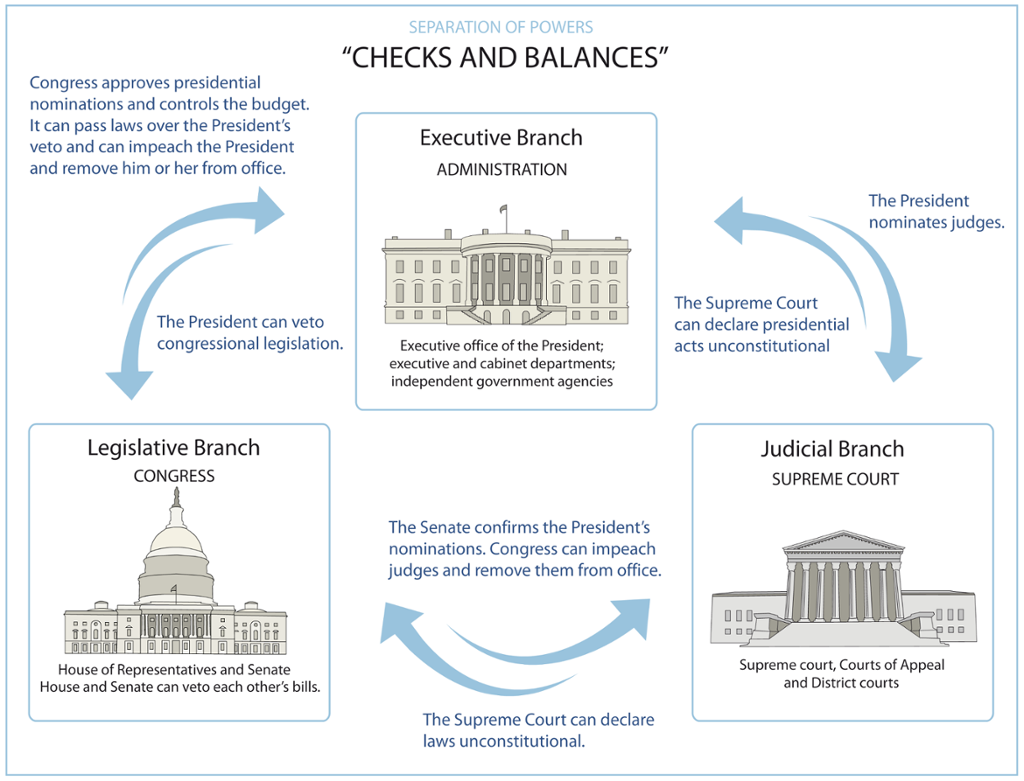
Two Chambers
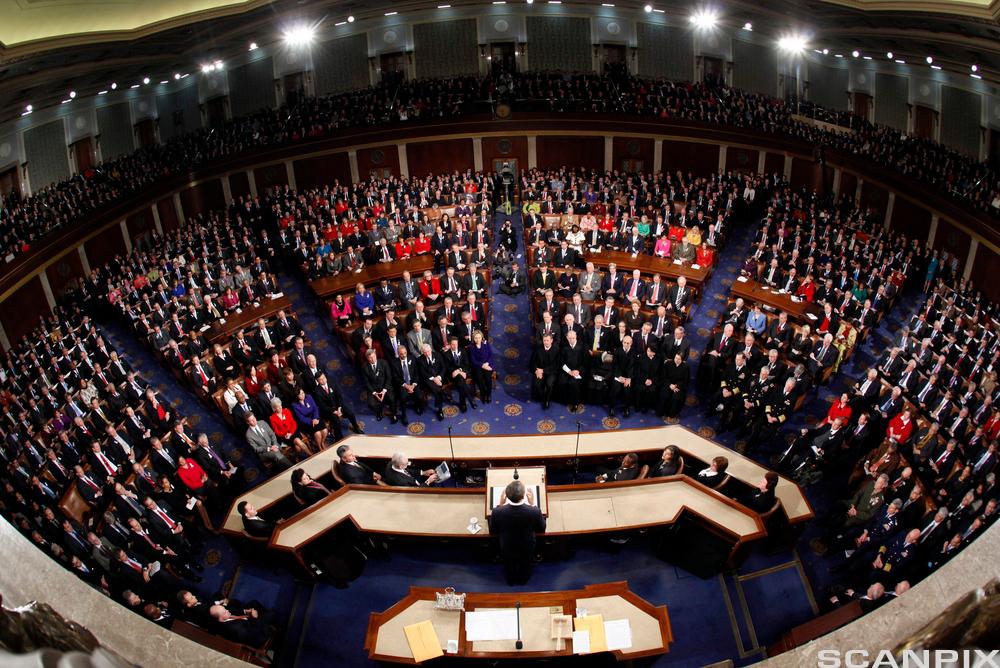
Separation of powers is also to be found in Britain, but in a weaker form. This is often referred to as Fusion of Powers. Here the three branches are more intermingled and integrated into each other. The Prime Minister (PM) sits in the House of Commons i.e. the Chief Executive is a member of the legislative branch. Until 2009, the highest court of appeal in Britain was the House of Lords, meaning that the final arbiters of judicial disputes were Law Lords (peers) in the unelected Upper House. In 2009, the Law Lords were removed from the Lords and put into a new Supreme Court, somewhat separating the judicial and legislative branches. While the Supreme Court in America can declare a new law as unconstitutional (going against the intentions of the Constitution) the British Supreme Court’s role is confined to judicial reviews.
Government
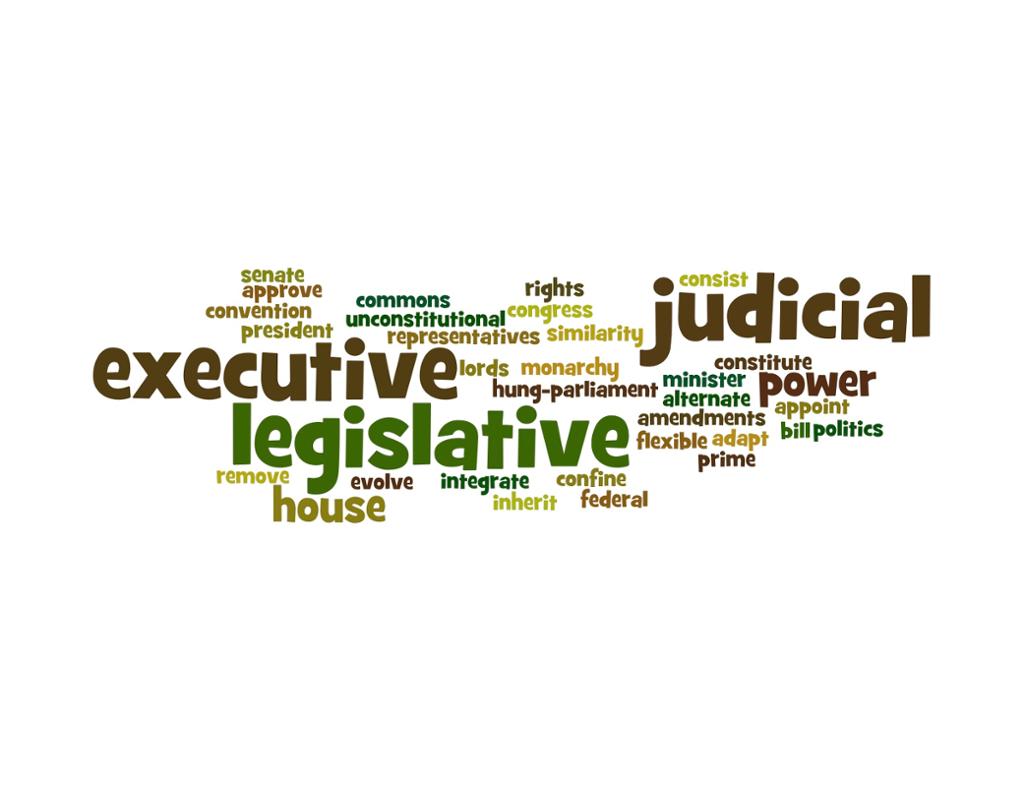
Due to the ways the two systems of government are designed, the American President has more limitations to his power than is the case of the British PM. A Democratic president might have a Republican majority in Congress making it difficult for the President to get his policies through. In such a situation, Congress can vote down every suggestion from the President. In Britain there is no systematic limitation on the PM’s power, but the political room for manoeuvre depends on his party’s majority in the House of Commons. The larger the majority, the more policies the PM and the government can get through, without any branch or other institution interfering. PMs with a strong majority can therefore make huge changes to British society in the course of the years his/her party is in power. In Britain, there is no limit as to how many times a PM can be re-elected while in America a president can serve for the maximum of two periods (8 years).
The President and the Prime Minister
Being elected president is a long and costly affair. Presidential candidates are nominated at the two parties’ national conventions and the different nominees fight it out in the presidential primaries to see who is going to represent the two parties in the actual presidential election. As opposed to America, the British PM is normally the leader of the political party he/she represents. The PM is called "first among equals", indicating that the PM needs to be elected to the House of Commons in general elections just like his/her fellow Members of Parliament (MPs). In other words, a PM needs to be an MP too.
"The Special Relationship"

The relationship between Britain and America is often referred to as “The Special Relationship”, indicating long historical relations dating back to pre-US independence times. Many people from the British Isles emigrated to America, and the cultural, social, religious and political exchanges have been many over the centuries. After World War II, the nature of the relationship changed as a result of the new world order emerging after the war. Britain, that used to be the senior partner, was overtaken by America’s new global position and had to adapt to being America’s junior brother. This was much to the dismay of the imperial power, Britain, that used to rule the waves of the world. At the beginning of the 21st century, Britain has come to terms with the nature of the relationship and often operates as America’s most important ally. Anglo-American relations are also important for Europe and the EU, as Britain seeks to keep one leg in America and one in Europe.
Tasks and Activities
- The article above contains information on a core subject in your curriculum this year; British and American political systems . To memorise the information and to make notes that might prove useful for the written exam (keep in mind that you are entitled to use your notes and books for the exam), it might be a good idea to work with this text in the following way:
- Read through the text once. Then make a table with two columns one for the USA and one for the UK and seven rows one for each of the headings in the text above (Monarchy vs. Federalism and so forth). Start by filling out the points you remember from each paragraph. Try to single out differences and similarities. Then work with a partner and exchange information. When done, make groups where you gather all your points together. Eventually the class can make ONE document that you can store in your archive.
- Work in pairs or in groups.
- Look up the origin of the world "parliament" or "parlament" here Parliament on Wikipedia. What is the original meaning of the word? Then explain the term “The Mother of Parliaments”.
- What is meant by “Checks and Balances”? Why did the Founding Fathers introduce this system?
- Describe the functions of the House of Lords. Why has the Upper House been the subject of political debates recently?
- Discuss the American President’s position within the American political framework. What are the limitations to his power? And what sort of duties does he have?
- Compare and contrast the powers of the British Prime Minister and the American President.
Useful Resources
UK
A Short Guide to the British Political System
UK Parliament and Government: An Overview (video)
US